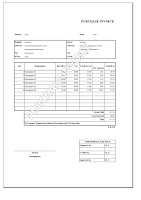“Accounting is the language of Business”.
Let’s
test our definition of Accounting; we all know that for running a business we
need some resources.
Resources:
Resources of the business mean the items which is necessary to run
a business. e.g Cash, Bank Account, Stock, Office Furniture, Machinery,
Delivery Vehicle, Building, and Equipment.
In Accounting we give the name to all this resources is “Assets” and
It is also give us a definition of Assets, anything which is qualify in this
definition we called it “Assets”.
“An asset is a resource controlled by the entity as a result of
past events and from which future economic benefits are expected to flow to the
entity.”
Go back to our explanation of Resources / Assets, we can observe
that there are many assets which have short term benefits, and the others have
long term benefits. So, we can divide these Assets according to their future economic
benefits time in two categories, Current Assets and Fixed Assets.
Before going to the definition of Current Assets, here are some
points to cover first. Accounting Period is the time period when companies
close his account and create Profit / Loss statement and Balance Sheet. Generally
it is 12 month period, in some countries it is started from January and End at December
31. In Pakistan it is started from July and End at June 30. Future
Economic Benefits means the inflow of Cash into the Business.
“Current Assets are
that resources of Business which Economic benefit is not more than One
Accounting Period.” Current Assets example includes Cash, Bank Account, Stock, Raw
Material Inventory, Finished Goods Inventory, Receivables, Short Term Advances,
Short Term Investments, and Prepayments.
“Fixed Assets are the resources other than Current
Assets.” Or “The Assets which future economic benefit is more than one
Accounting Period.” Fixed Assets Example includes Office Furniture, Equipment, Machinery,
Land, Building, Plants, Goodwill, Copyrights, and Trademarks.
Fixed
Assets are further more divided into Tangible and Intangible Fixed Assets.
“Tangible Fixed Assets are the Fixed Assets which
have physical existence”. Example is Property, Plant and Equipment.
“Intangible Fixed Assets are the Fixed Assets which
have not physical existence”. Examples are Copyright, Patents, and Goodwill.
Sources:
Sources are the means of business by business get the funds for
resources. Sources are two type, Internal and External. Example of Internal
Sources is Fund provided by the owner in term of Investment. Example of External sources is loan from the suppliers,
other peoples, and businesses.
Internal Sources Called by Capital / Owner Equity in
Accounting and External Sources are called by Liabilities.
As
Same in the case of Assets, Liabilities are also current and long terms.
Current Liabilities is
the liabilities which will pay in one Accounting Period. Accounts Payable,
Notes Payable, Bank Overdraft are the some examples of Current Liabilities. Other
than Current Liabilities all the liabilities are Long Term Liabilities.
For more explanation of Liabilities we
can say that liabilities mean all that which we get economic benefit in present
and will pay it in future.
Revenues:
If we look closer in businesses we observe that every business is
selling something. Some are selling goods; some are selling services, and some are
selling both. This is called revenues in Accounting.
Examples of Revenues are Sales Income, Consultancy Fee Income,
Service Charges Income etc.
Expenses:
Expenses mean the outflow of money (Economic Benefit) to getting
the revenues.
Examples of Expenses include Salaries Expense, Utility Bills
Expense, Courier Postage & Telegram Expense, Repair & Maintenance
Expense, etc.
Summary:
Types / Nature
of Accounts
|
Explanation
|
1)
Assets
|
Future Economic Benefit
|
2)
Liabilities
|
Out Flow of Future Economic Benefit at the result of past events.
|
3)
Owner Equity
/ Capital
|
Investment by the owner
|
4)
Revenue
|
Selling of Goods and Services
|
5)
Expense
|
Out flow of economic benefit to get the revenues
|







